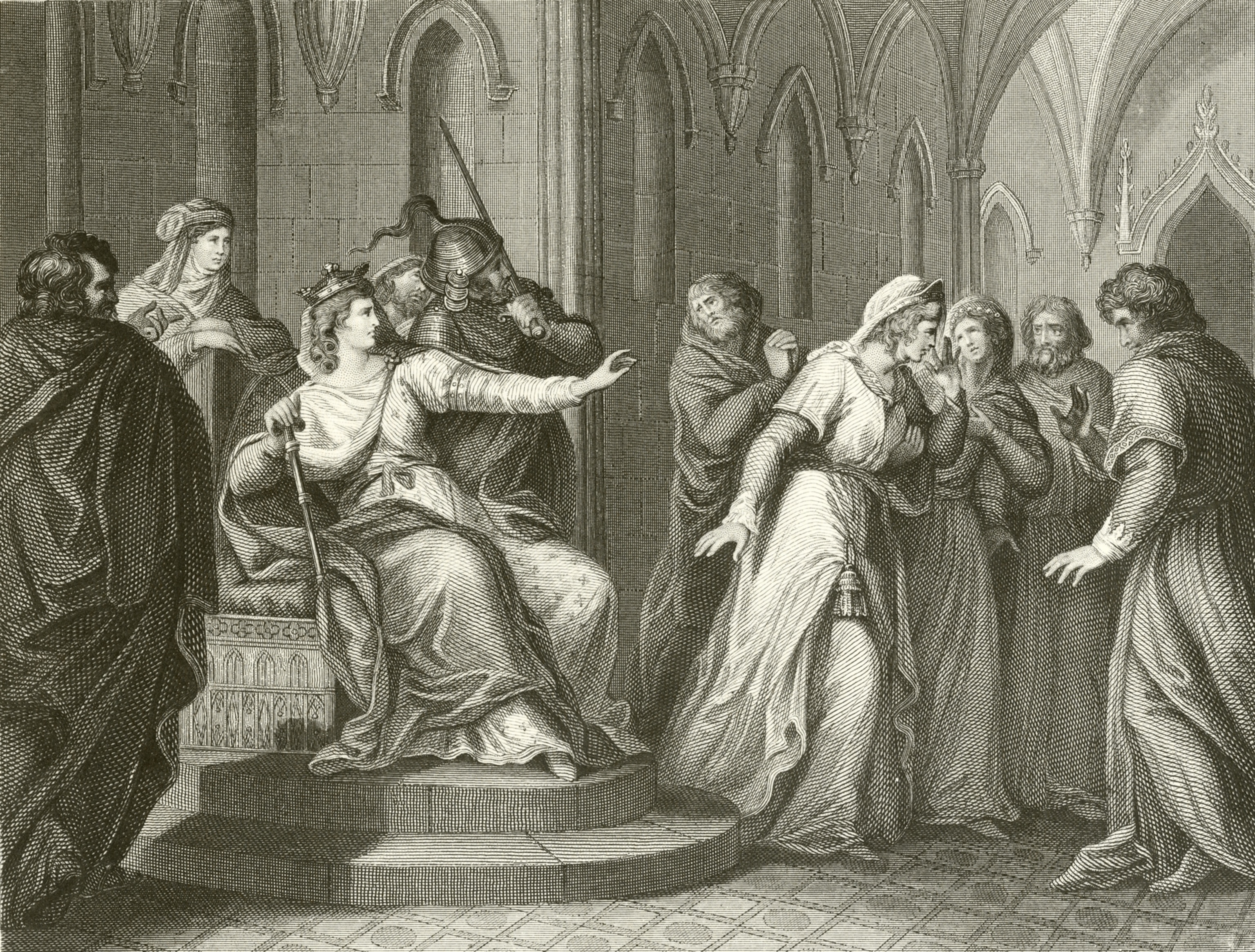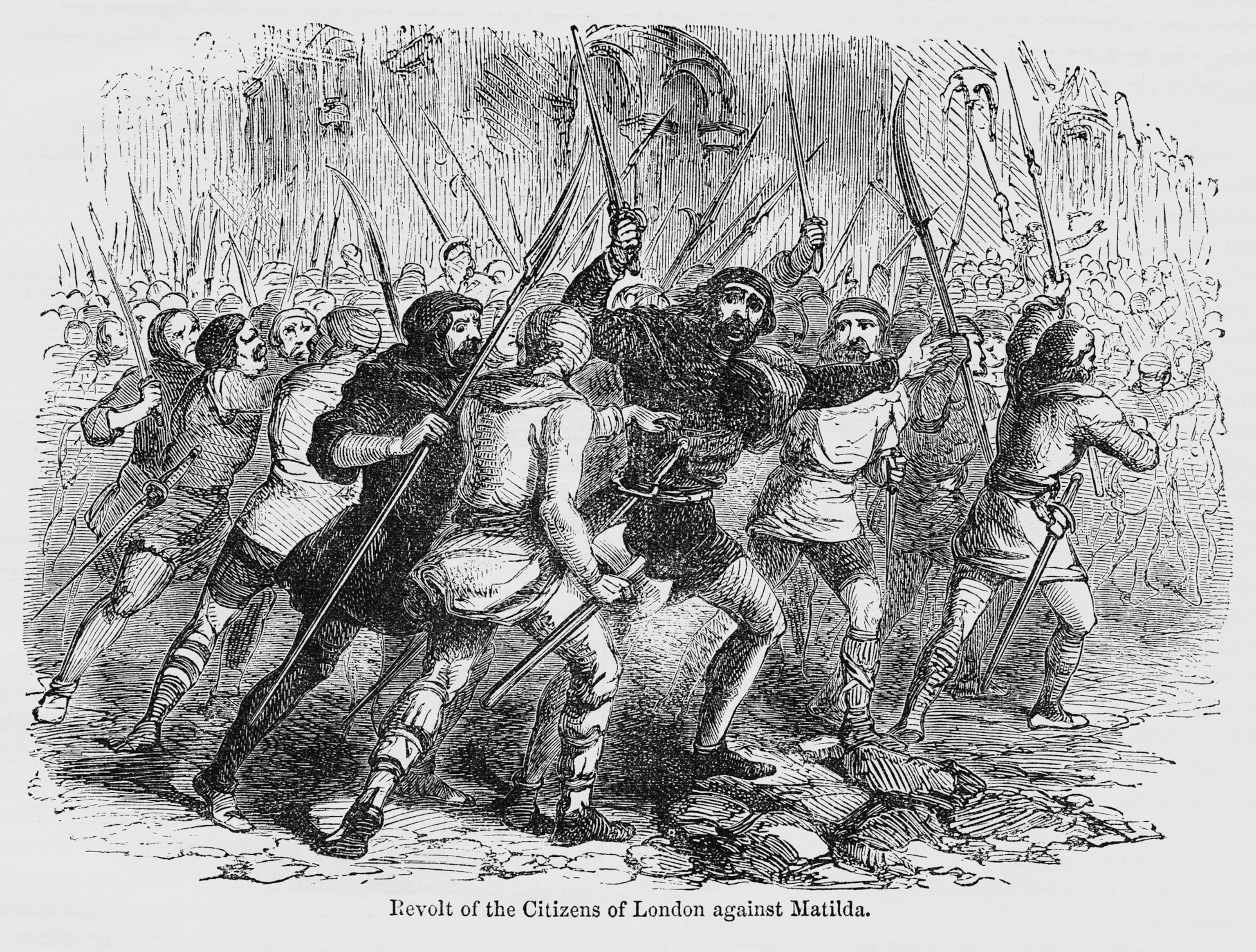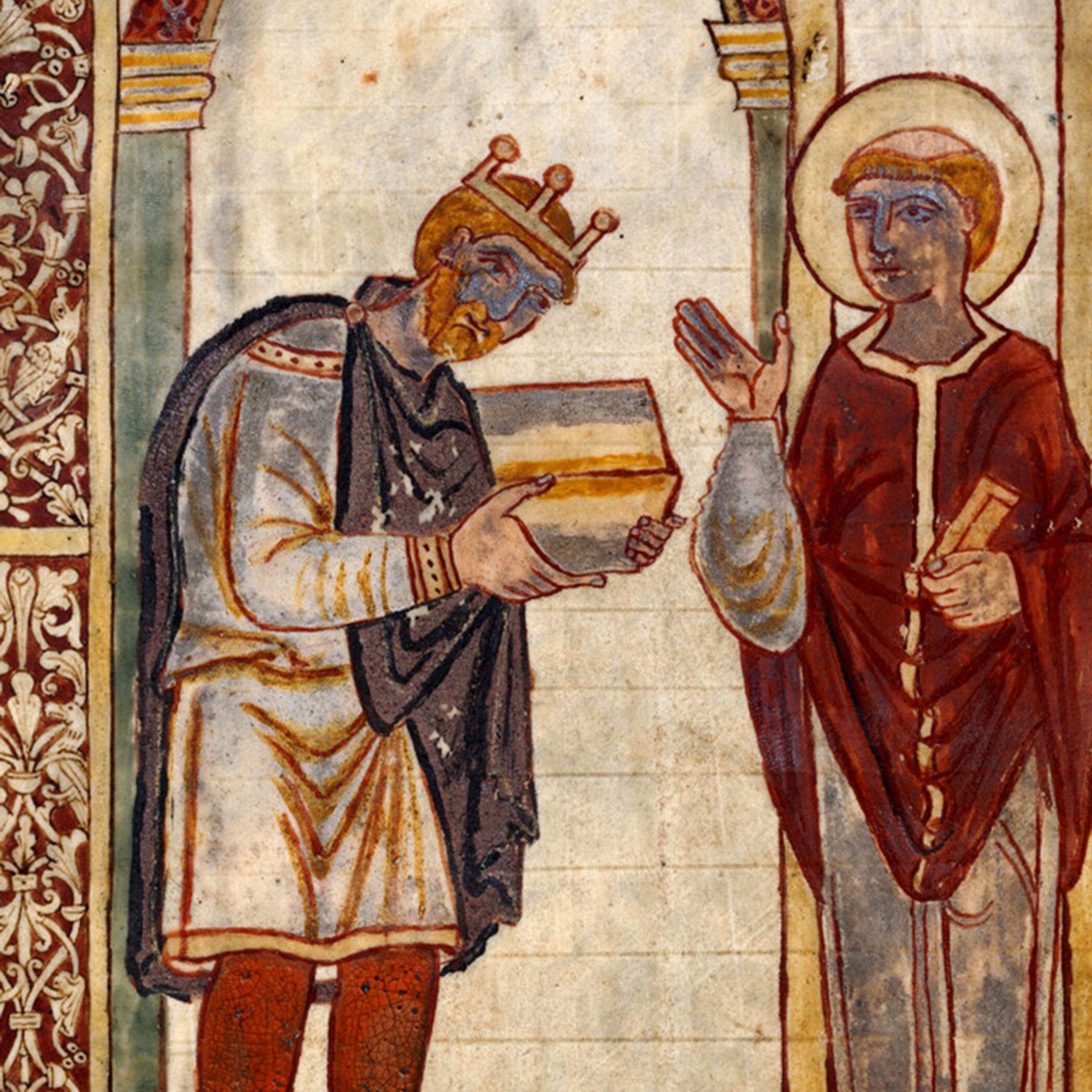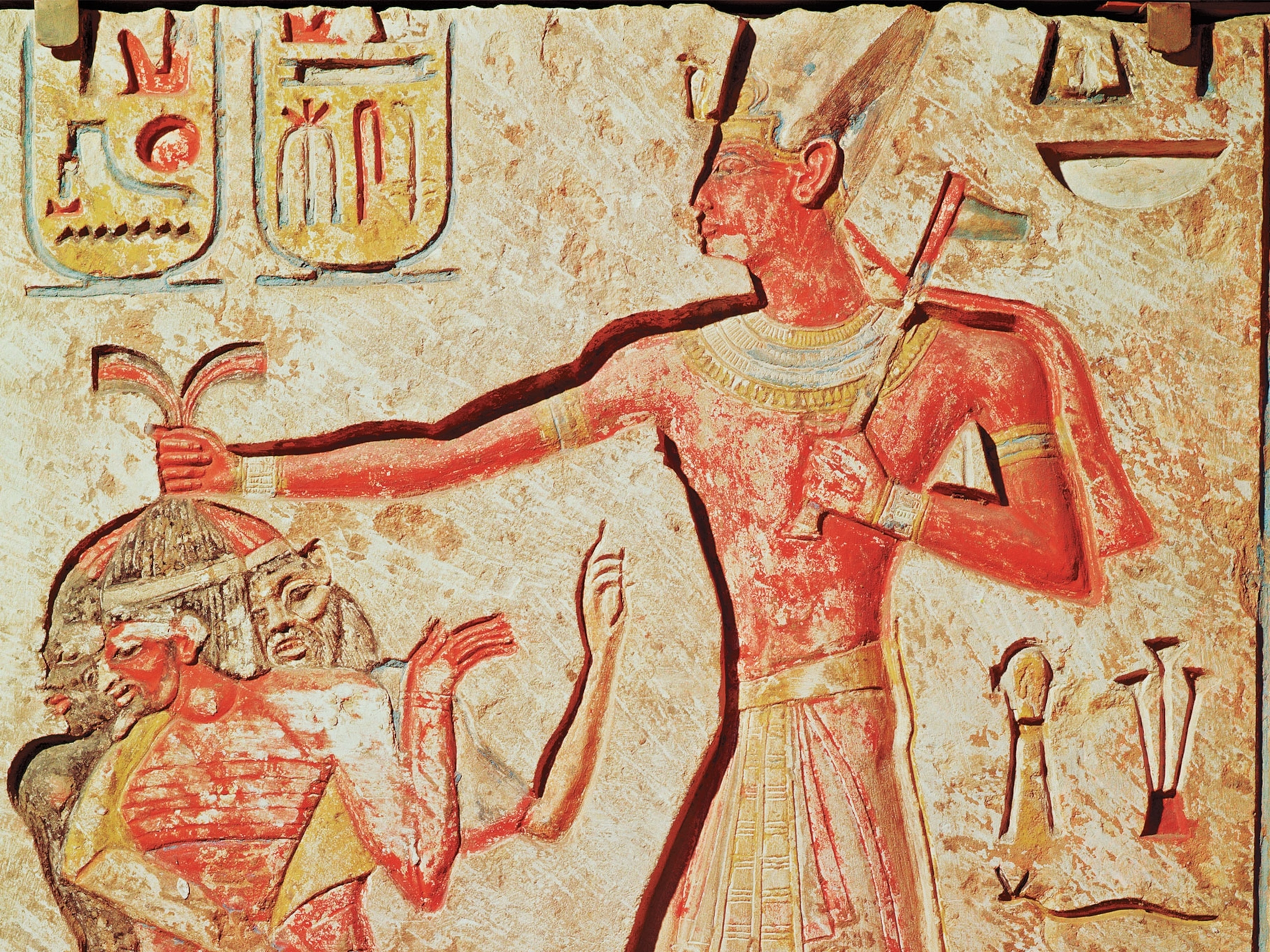Who was Empress Matilda? The forgotten woman who nearly became England's first queen
In a world determined to sideline her, Empress Matilda tested the medieval world's understanding of who could rule.
![Queen Matilda. Golden Book of St Albans. England [St Albans]; 1380. [Lower miniature] Queen Matilda, daughter of King Henry I, seated and holding a charter. Matilda was a benefactor of St Albans Abbey Image taken from Golden Book of St Albans.](https://i.natgeofe.com/n/c8c883d2-4fe1-484f-8171-44058cd9c417/R577FB.jpg)
When the sinking of the White Ship decimated England’s line of succession and threw the kingdom into chaos in 1120, one teenage girl was the only heir to the British throne left standing.
Even with the—at first reluctant—endorsement of her father King Henry I, 25-year-old Matilda couldn’t achieve that historical first: ruling as queen in her own right.
Here’s how Matilda’s path—and, perhaps, a crucial “lack of ruthlessness”—led to her almost being the first queen of England.

Who was Empress Matilda?
In 1112, when she was just eight years old, King Henry I shipped Matilda off to Germany to marry Henry V of Germany, the Holy Roman Emperor. She cut her teeth in the German court, learning how to survive away from her powerful family. These years strengthened her “core of steel,” says Catherine Hanley, a medieval historian and author of Matilda: Empress, Queen and Warrior.
“She wasn’t just his wife who was going to sit in the background,” Hanley says. “A lot of eight-year-old girls, on being separated from their mother and being sent abroad, would have collapsed in a heap. But historians say she took it on and said, ‘This is my destiny. This is what I’m going to do.’”
Matilda’s “incredible determination” impressed her husband. After Matilda was crowned Holy Roman Empress in 1114, Henry V treated her as a political adviser and helpmate. He trusted her enough to appoint her his regent in 1118. While Henry V was away fighting a series of foreign wars, he declared Matilda competent enough to be left in control of Italy.
But the sinking of the White Ship in 1120, and her husband’s death in 1125, threw Matilda’s destiny into question. She traveled back to England as a childless widow and former empress—but her years abroad and skills honed in a foreign court intrigued her formidable father.
(How one catastrophic shipwreck sank a medieval dynasty.)
The White Ship disaster had devastated Henry I of England. As one ballad describes, the king, “never smiled again” after receiving news of the tragedy. So much of Henry I’s legacy was imperiled by that disaster. With his only legitimate son drowned, he tried desperately to produce another male heir, to no avail. Without one, he faced the loss of his entire dynasty—and, potentially, a bloody war to retain control of the crown.
But observing Matilda’s powers at court provided some hope. At a Christmas gathering in 1127, Henry gathered the nobility to announce a change in the succession plan: Matilda, and any of her male heirs, would be next in line to the throne. But Henry I brokered a new marriage for his daughter, this time to the influential Geoffrey of Anjou. Geoffrey controlled Normandy, a region in the north of France that Henry I had long wanted to rule. And so, after insisting his nobles swear an oath of allegiance to Matilda, Henry died in 1135.
Thus began a mad scramble amongst the male, English nobility to unseat a woman and claim the crown.
Matilda’s right to rule England

Despite the explicit endorsement of her formidable father and the royal bloodlines to back it, many English nobles had concerns about Matilda’s claims to the throne. But while Henry I was alive, none were brave enough to speak those concerns aloud; Hanley describes him as “absolutely terrifying.”
But once Henry I passed away, those long-held concerns grew louder and louder. Some claimed Matilda was “too foreign” to be accepted as Queen of England. Still others felt she was too unfamiliar to the public, having lived much of her life abroad. A few worried her second husband, Geoffrey of Anjou, had his own designs on the throne. Geoffrey held considerable power in his own right as ruler of Normandy, and at a time when queens were to be seen and admired—not respected—these nobles considered her as but a pawn in her husband’s bigger game for the throne. That fear, of course, revealed the biggest issue of all: Matilda was a woman.
(The Bayeux Tapestry was medieval propaganda for William the Conqueror.)
“If Henry I had left his throne to a capable, intelligent, educated, internationally and politically experienced adult son, do you think anyone would have questioned that?” Hanley says. “The fact they were questioning it is entirely due to the fact Matilda was a woman.”
While her background as Holy Roman Empress served her well behind the scenes, Matilda’s path to the throne was blocked by ambitious nobles, palace intrigue and, of course, sexism. In 1135, Matilda was heavily pregnant with her third son and couldn’t travel quickly enough from France in time to make a coronation. In those fateful weeks after her father’s death, Matilda’s cousin Stephen of Blois usurped the throne—despite having been one of the men who swore loyalty to her while Henry I was alive to demand it.
This betrayal led to 15 years of civil war, one so brutal that people called it “the Anarchy.” The war for the throne nearly tore England apart.


The Anarchy
Matilda began the Anarchy at a disadvantage as she didn’t have Stephen’s military experience and accolades. Still, Matilda secured a valuable ally in her illegitimate half-brother, Robert, the Earl of Gloucester, who had no serious claim to the throne himself. In supporting Matilda, he brought his military power and his stronghold in the southwest of England—two things that helped Matilda sustain throughout the Anarchy.
With Robert leading her military campaigns, Matilda could focus on war administration work, says Gabrielle Storey, a historian who has studied medieval queenship and sexuality.
“Power is never really vested in one individual,” Storey says. “She’s already come to England with all these skills of rulership, in terms of being a mediator and a diplomat and a politician. She was a networker.”
As Robert fought on the battlefield, Matilda raised money, marshalled support, and brokered vital agreements with other powerful nobles—not that any of them, spare Robert, would ultimately remain loyal.
Matilda also had an image problem, one rooted in the centuries-old patriarchy and entrenched misogyny keeping her from the throne. Contemporary sources describe her as “haughty”—and at a time when women were expected to appear meek and subservient, such a reputation made Matilda an easy target for enemies and sexists alike.
“I think it reveals women are held to higher standards than men,” Storey says. “We have a lot of poor kings in the 12th century, in wider Europe. She’s not allowed to make these errors of political judgment in the same way. She tells us women can have the experience to rule, they can be successful, and they can have everything you’d expect them to succeed—she has the birthright, these networks—but if there is a man available for the job, that’s still preferential.”
But 1141 brought a key turning point in the war. Matilda’s forces successfully defeated Stephen’s at the Battle of Lincoln. With Stephen in prison, the almost-queen set the stage for her long-delayed coronation. She took the title of “the Lady of the English,” or “Lady of England and Normandy,” until she could make it to London.
But it was then Matilda made a fatal error: after successfully capturing Stephen in battle, she traded him back to his forces for the safe return of Robert of Gloucester, who’d previously been captured. Another ruler might have instead kept Stephen in prison or even had him executed to block his path to the throne altogether.
But after Matilda negotiated the release, Stephen immediately took up arms against the would-be queen again. Londoners met her delayed coronation with wild civil unrest in London. Matilda and her troops were forced to retreat. The would-be queen’s “lack of ruthlessness," as Storey describes, prolonged the war for another 10 years.

Those next 10 years of fighting were bloody, brutal and drawn-out. Matilda is twice taken captive, but legend tells of her ingenious escape plans. During the siege of Oxford, she escaped her tower prison cell and crossed the frozen river by foot. She dressed herself in a white cloak so that she’d blend in with the snow. Another time when she was held prisoner in Wiltshire, she supposedly disguised herself as a corpse and hid within a funeral pyre until she could be rescued by her half-brother.
But by 1153, both sides were fatigued. Robert of Gloucester had died in 1147, and Matilda’s son Henry II took his place in battle. Try as he might, Stephen couldn’t wrest control of Matilda’s stronghold in the southwest of England, and elsewhere in the countryside, rumors of agitating nobles threatened to enter the conflict.
The future king
Stephen and Matilda agreed to a tentative peace in the Treaty of Westminster in 1153. Stephen could remain on the throne so long as he named Henry II his heir. Stephen died just one year later, and Matilda’s son assumed the throne that had once been promised to his mother.
Had she been crowned queen, Matilda might have changed the course of English history, and the lives of other powerful women throughout medieval Europe. Her son’s wife, Eleanor of Aquitaine, would take a much more active role in the Middle Ages, but a queen wouldn’t rule England in her own right until “Bloody” Mary Tudor was crowned in 1553, 400 years after Matilda secured the throne for her son.
(How Eleanor of Aquitaine outwitted and outlasted her rivals.)
Matilda lived out the rest of her life in Normandy, where she continued using the titles “Empress” and “Lady of the English.” She died of natural causes in 1167, at the age of 65. As her gravesite epitaph describes, the men of her time saw her life as but a footnote to that of the men who surrounded her: “Great by birth, greater by marriage, greatest in her offspring: here lies Matilda, the daughter, wife, and mother of Henry.”








